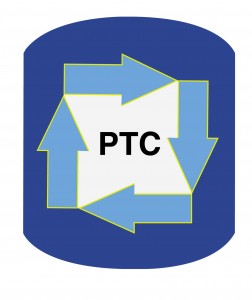We found this perfluorooctyl quat salt, commonly known as FC-134, highlighted in a patent that issued this month entitled “Phase-transfer catalytic colour fixation processing method for textile.” See Long, J.; Xu, H.; Cui, C.; Chen, F.; Wei, X.; (Soochow University) US Patent 9,739,010, 22-Aug-2017
Sometimes, people confuse surfactant quats with phase-transfer catalyst quats (we wrote an article about this more than a decade ago shown at http://phasetransfer.com/PTCnotSurfactant.htm; note that the E-mail address and physical address shown in the article are no longer valid).
According to the patent, FC-134 was used to “notably improve the nucleophilic reactivity of functional groups on fibres in hydrophobic supercritical carbon dioxide, and has the advantages of improving the fixation efficiency of disperse reactive dyes on textiles, shortening the processing time and so on, even with simple process and easy operation.”
If the mechanism involves a nucleophilic reaction, then there is a chance that FC-134 is acting as a phase-transfer catalyst that transfers and activates a nucleophile into an non-polar phase. Supercritical carbon dioxide is a highly non-polar liquid that is effective in PTC applications such as those impressively developed and studied in great detail by Charles Liotta and Charles Eckert at Georgia Tech. However, given the unmistakable hydrophilic head-hydrophobic tail structure of the quat, there is a chance that the mechanism of activity is that of a surfactant and maybe less so that of a phase-transfer catalyst.
If you need help choosing a phase-transfer catalyst for a commercial process, now contact Marc Halpern of PTC Organics.
About Marc Halpern

Dr. Halpern is founder and president of PTC Organics, Inc., the only company dedicated exclusively to developing low-cost high-performance green chemistry processes for the manufacture of organic chemicals using Phase Transfer Catalysis. Dr. Halpern has innovated PTC breakthroughs for pharmaceuticals, agrochemicals, petrochemicals, monomers, polymers, flavors & fragrances, dyes & pigments and solvents. Dr. Halpern has provided PTC services on-site at more than 260 industrial process R&D departments in 37 countries and has helped chemical companies save > $200 million. Dr. Halpern co-authored five books including the best-selling “Phase-Transfer Catalysis: Fundamentals, Applications and Industrial Perspectives” and has presented the 2-day course “Practical Phase-Transfer Catalysis” at 50 locations in the US, Europe and Asia.
Dr. Halpern founded the journal “Industrial Phase-Transfer Catalysis” and “The PTC Tip of the Month” enjoyed by 2,100 qualified subscribers, now beyond 130 issues. In 2014, Dr. Halpern is celebrating his 30th year in the chemical industry, including serving as a process chemist at Dow Chemical, a supervisor of process chemistry at ICI, Director of R&D at Sybron Chemicals and founder and president of PTC Organics Inc. (15 years) and PTC Communications Inc. (20 years). Dr. Halpern also co-founded PTC Interface Inc. in 1989 and PTC Value Recovery Inc. in 1999. His academic breakthroughs include the PTC pKa Guidelines, the q-value for quat accessibility and he has achieved industrial PTC breakthroughs for a dozen strong base reactions as well as esterifications, transesterifications, epoxidations and chloromethylations plus contributed to more than 100 other industrial PTC process development projects.
Dr. Halpern has dedicated his adult life to his family and to phase-transfer catalysis (in that order!).


